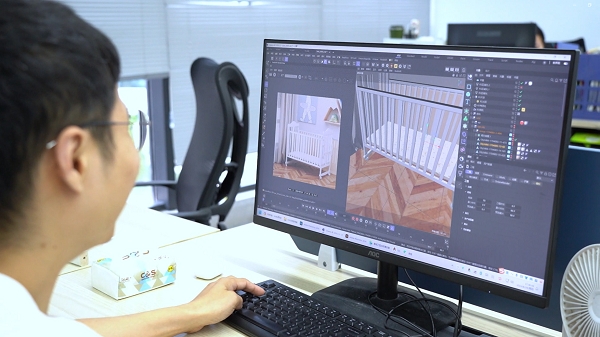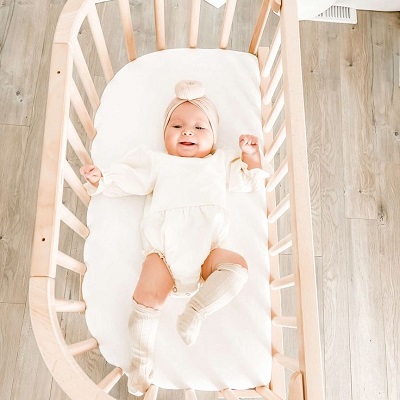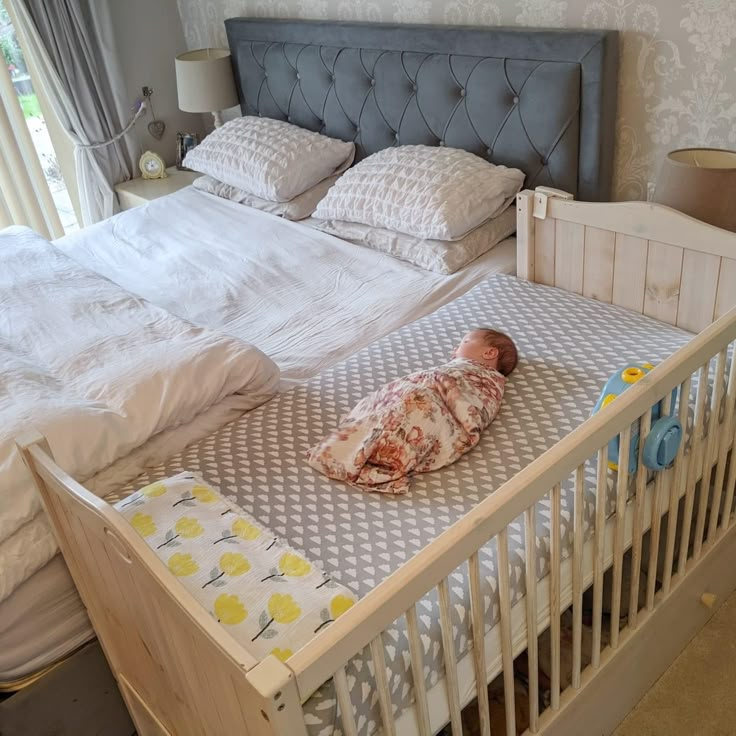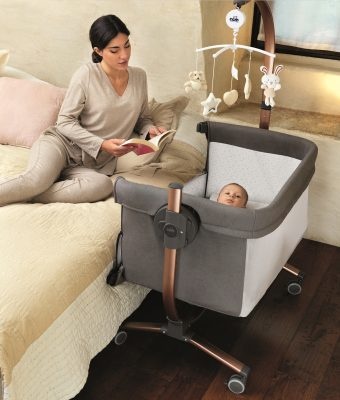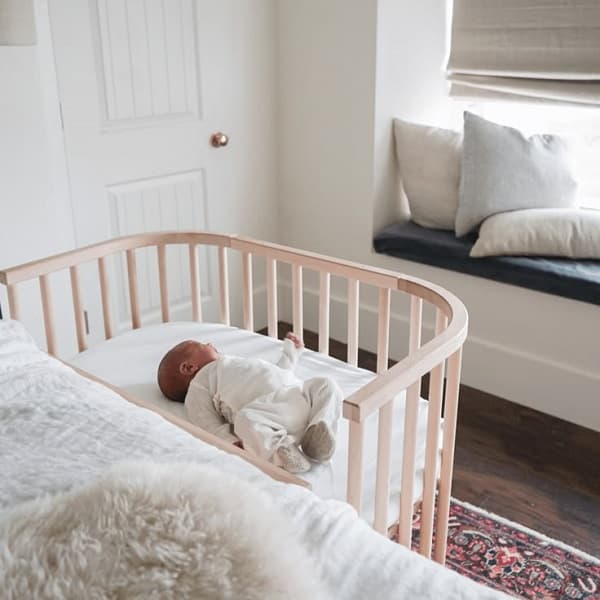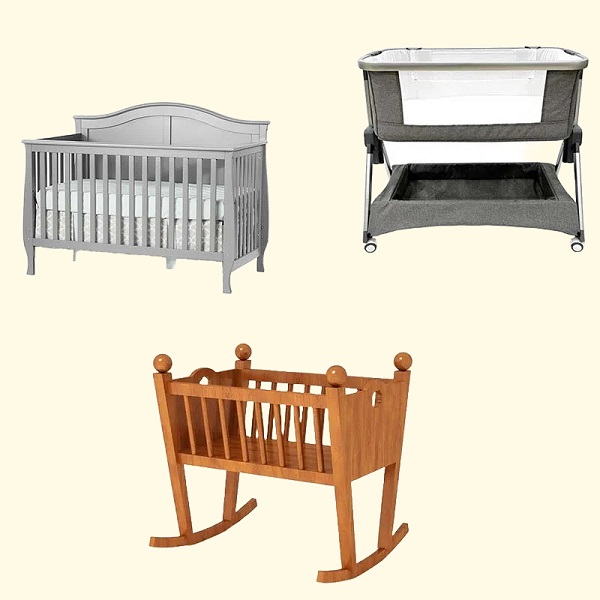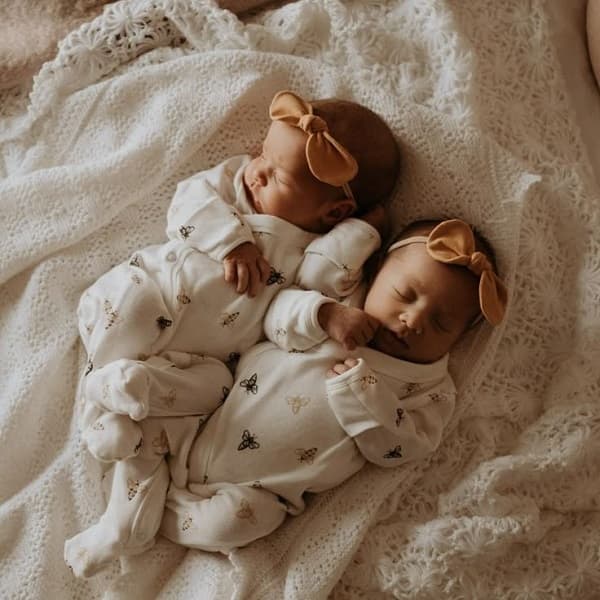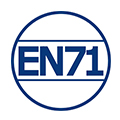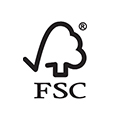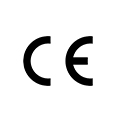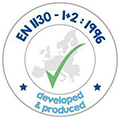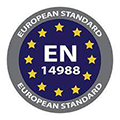Let’s talk cribs—the one piece of baby gear that keeps new parents up at night (and not just because of midnight feedings). Choosing where your baby sleeps isn’t just about aesthetics or trends; it’s about creating a safe little nest where you can finally exhale.
But between convertible models, eco-wood finishes, and Wi-Fi-connected sensors (yes, those exist), it’s easy to spiral into decision fatigue. Add conflicting advice from well-meaning relatives (“We used a drop-side crib, and you turned out fine!”), and the pressure skyrockets.
This guide? Consider it your chaos filter. We’ve mashed up the latest AAP safety rules, pediatrician insights, and real-parent experiences to answer one question: What truly matters when choosing a boks bayi?
No fluff, no scare tactics—just the stuff that actually matters. Ready to turn crib shopping from panic mode to power move? Let’s dive in.
Safety First: Non-Negotiable Crib Features
Repeat after us: “Cute” doesn’t trump “safe.” The U.S. Komisi Keamanan Produk Konsumen (CPSC) reports that unsafe sleep environments contribute to hundreds of infant injuries annually—many of which are preventable.
So before you swoon over that Instagram-worthy vintage crib or a too-good-to-be-true marketplace deal, here’s what your baby actually needs to stay safe:
Safety Certifications: The Golden Stamp of Approval
Look for cribs certified by the Juvenile Products Manufacturers Association (JPMA) and tested to meet ASTM International and CPSC standards. These certifications ensure the crib passes rigorous tests for structural integrity, chemical emissions, and hazard prevention. Pro tip: If a product description vaguely claims “meets safety guidelines” without naming these organizations, skip it.
For a detailed breakdown of what each certification entails (and how to spot red flags), check out our Standar dan Sertifikasi Keamanan Tempat Tidur Bayi: Panduan Lengkap.
Slat Spacing: No Room for Risk
The AAP mandates that crib slats must be no more than 2.375 inches (6 cm) apart—roughly the width of a soda can. Wider gaps can trap a baby’s head or limbs, a risk highlighted in multiple CPSC recalls. If you’re eyeing a secondhand crib, grab a tape measure. Vintage designs often fail this test.
Fixed Side Rails: Drop-Sides Are Dead (For Good Reason)
Drop-side cribs were banned in 2011 after causing dozens of infant deaths due to mechanical failures. Opt for fixed rails instead. Modern designs often include adjustable mattress heights (more on that later) to compensate for the lack of moving parts.
Sturdy Construction: Shake It Like a Toddler Would
Before buying, mentally (or physically) channel your future toddler’s energy: Would this crib withstand shaking, kicking, or chewing? Check for:
- Smooth, splinter-free surfaces (no rough edges).
- Secure hardware (no loose screws or wobbly joints).
- Weight limits (most standard cribs support 50+ lbs).
Mattress Fit: The “Two-Finger Rule”
Even the safest crib becomes hazardous if the mattress doesn’t fit snugly. Use the two-finger test: If you can squeeze more than two fingers between the mattress and crib walls, it’s too small. Gaps can trap babies, increasing suffocation risks.
Kiat Pro: Avoid soft mattress toppers or “breathable” mesh liners—they’re unnecessary and can pose entanglement hazards. Stick to a firm, flat mattress approved by the AAP.
Material and Durability: Solid Wood Is the First Choice
Cribs aren’t just for newborns—they’ll endure teething, climbing, and the occasional stuffed animal avalanche. That’s why crib material matters. Let’s break down your options:
Why Solid Wood Reigns Supreme?
Solid hardwoods like oak, maple, or birch are the gold standard. Here’s why:
- Durability: Resists warping and withstands years of use (and abuse).
- Non-Toxic: Naturally low in VOCs (volatile organic compounds), especially if finished with water-based stains or sealants.
- Eco-Friendly: Biodegradable and often sourced sustainably.
But solid wood isn’t flawless. It’s heavier and pricier than the alternatives. If the budget is tight, prioritize solid wood for the crib frame and opt for engineered wood (like plywood) in non-structural parts like drawer bases.
Engineered Wood: A Budget-Friendly Compromise
Particleboard or MDF (medium-density fiberboard) cribs are lighter and cheaper, but some contain formaldehyde-based glues. Look for CARB Phase 2 compliant products, which meet strict emission standards. These materials chip easily when teethed on. If you go this route, apply silicone rail guards.
Metal Cribs: Niche but Notable
Metal cribs are less common but offer sleek, modern designs and easy cleaning. However, they’re prone to scratches and lack the warmth of wood. Ensure the finish is lead-free and non-corrosive.
Whether you choose wood or metal, verify that paints or stains are lead-free, phthalate-free, and CPSIA-compliant. Brands like Clafbebe and Delta Children publicly disclose their safety certifications—use that to your advantage.
Adjustability and Longevity: Grow-with-Baby Designs
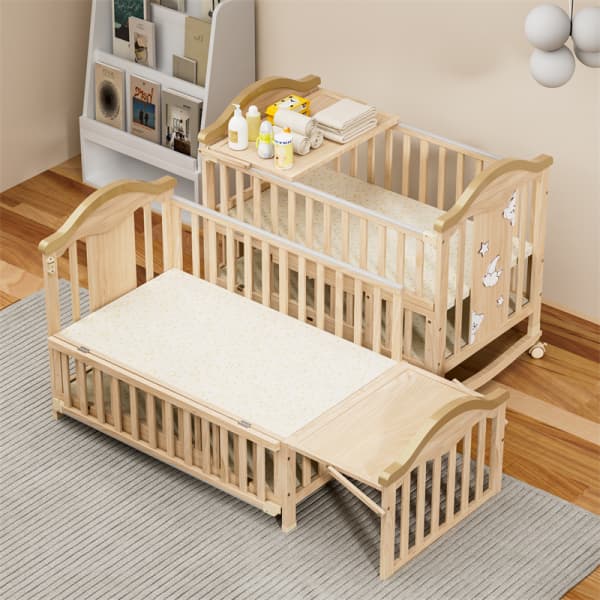
Babies grow fast. One minute they’re swaddled newborns, the next they’re scaling the crib rails like tiny mountaineers. That’s why savvy parents prioritize cribs that evolve alongside their child—saving money, reducing waste, and dodging the hassle of buying new furniture every few years.
Tempat tidur bayi yang dapat diubah are the Swiss Army knives of nursery furniture. Most transition through three to four stages:
- Standard Crib (0–24 months)
- Toddler Bed (remove one side rail; 2–5 years)
- Daybed (lowered mattress; 5+ years)
- Full-size bed (with conversion kits; requires purchasing a separate rail/mattress).
Newborns need their mattresses at the highest setting to avoid back strain during frequent pick-ups. But once your baby starts sitting up (around 6 months), lower it immediately. By the time they’re pulling to stand (9–12 months), the mattress should be at its lowest level—about 26 inches from the top rail.
Most convertible cribs support 50–75 lbs in crib mode and 150–200 lbs as full-size beds. Check the manufacturer’s guidelines: Cheaper models may skimp on structural support, risking splintering or wobbling as your child grows.
To be clear, convertible cribs aren’t for everyone. Skip them if:
1. You plan to have multiple children close in age (hand-me-down cribs are simpler).
2. You’re tight on space (full-size bed conversions require room).
3. You prefer a minimalist design (conversion kits can clutter storage).
Mattress Matters: Ensuring Comfort and Support
Think of the mattress as your baby’s sleep foundation, even the safest crib falls short if paired with the wrong one. Here’s how to nail this critical choice.
The AAP is crystal clear: A firm, flat mattress reduces the risk of Sudden Infant Death Syndrome (SIDS) by 50%. To test firmness, press your palm into the center—it should spring back immediately without conforming to your hand’s shape.
Avoid These Myths:
1. “Soft mattresses are cozier.” (They’re deadly for infants.)
2. “Dual-firmness mattresses are worth it.” (Flip-to-toddler-side designs often sag prematurely.)
A mattress that’s too small creates dangerous gaps. Use the two-finger rule: If you can fit more than two fingers between the mattress and crib walls, it’s unsafe. Standard crib mattresses measure 51.75 x 27.375 inches—but always double-check your crib’s manual.
Materials Compared: Foam vs. Innerspring vs. Organic Latex or Coconut Fiber
| Kelebihan | Kontra | |
| Foam Mattresses | Lightweight, affordable, often waterproof. | Less durable; may dent over time. |
| Innerspring Mattresses | Sturdy, long-lasting, better edge support. | Heavier, pricier. |
| Organic latex or coconut fiber mattresses | Environmentally friendly and resist mold allergens | The price is two to three times higher than other types of mattresses |
Many mattresses come with waterproof covers, but they’re often crinkly and trap heat. Instead, use a tight-fitting crib sheet (only one!) and layer a washable mattress protector underneath.
Extra Features: From Mobility to Storage
Crib shopping can feel like scrolling through a luxury car catalog—heated seats! Wi-Fi connectivity!—but do you actually need it? While some extras are gimmicks, others genuinely make parenting life easier. Let’s decode which features deserve your dollars.
Wheels
Cribs with lockable wheels are a godsend for:
- Cleaning behind the crib.
- Repositioning for better airflow or light.
- Moving the crib between rooms (e.g., nursery to your bedroom for late-night feeds).
But Beware: Cheap casters can malfunction or scratch floors. Test the locking mechanism rigorously—toddlers are master escape artists.
Built-In Storage
Some cribs include under-crib drawers or attached changing tables. These are ideal for small spaces but prioritize safety by ensuring drawers glide smoothly (no pinched fingers). Avoid models where storage encourages overcrowding the crib with toys or blankets (a suffocation risk).
Teething Rails
Teething turns babies into tiny beavers. Silicone rail guards protect both your child’s gums and the crib’s finish. Note: Avoid aftermarket rail covers that strap onto slats—they can loosen and pose entanglement hazards.
Smart Tech
“Smart” cribs boast features like rocking motion, white noise, or cry sensors. While these can soothe colicky babies, they cost a lot more than regular models. Plus, most outgrow high-tech features by 6 months. If you choose to buy one, ensure any automated movement meets ASTM standards.
AAP Warning: Avoid any product that straps babies in place or restricts natural movement, even if marketed as “anti-roll.”
How to Decide Which Crib Type Fits Your Lifestyle?
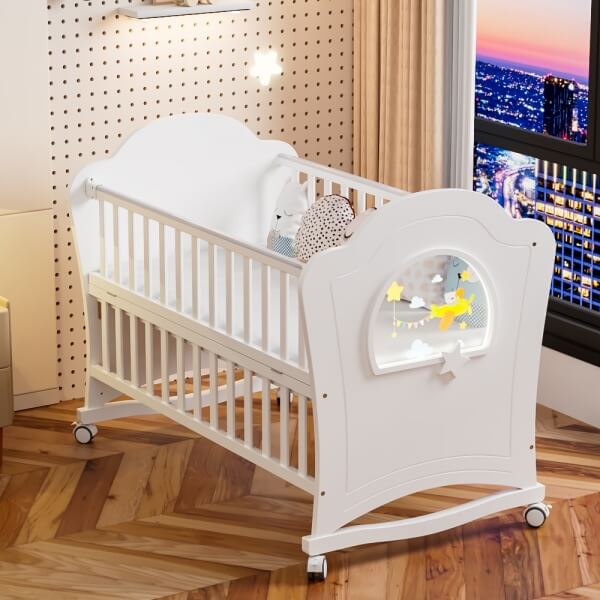
Choosing a crib isn’t just about safety specs—it’s about your life. Are you a minimalist city dweller? An eco-conscious parent? A busy family on a budget? Ask yourself these questions to narrow your options:
1. How Long Do I Plan to Use This Crib?
One-and-Done Families: A standard crib works if you’re passing it down or reselling it.
Multi-Child Households: Invest in a convertible crib to avoid repurchasing.
2. What’s My Nursery Size?
Small Spaces: Tempat tidur bayi mini or foldable designs save square footage.
Sprawling Nurseries: Go bold with a canopy crib or add-on storage.
3. What’s My Parenting Style?
Practical Parents: Prioritize adjustable heights, teething rails, and stain-resistant finishes.
Eco-Warriors: Opt for Greenguard Gold-certified, FSC-certified wood.
4. What’s My Budget Reality?
Under $300: Focus on safety basics (JPMA-certified, non-toxic finishes).
300–600$: Splurge on convertible features or organic materials.
$600+: Luxury buys like heirloom-grade hardwood or smart tech.
5. The Final Test: Does This Crib Simplify My Life?
A crib should ease stress, not add to it. A 2023 Parenting Magazine survey found that 68% of parents regretted prioritizing style over function. Let their hindsight be your guide. If you’re debating between two models, ask:
Does it align with my daily routine?
Will it grow with my child (or become clutter)?
Can I trust its safety without constant worry?
Top 5 Crib-Buying Mistakes Parents Make
Even the most prepared parents can stumble into these common traps. Learn from others’ regrets to sidestep headaches (or worse):
1. Prioritizing Aesthetics Over Safety
Some parents may choose a crib because it “matches the nursery” or has ornate details, like carved scrollwork or vintage styling. However, older or decorative designs often violate modern safety standards. For example, the CPSC recalled 24,000 “heirloom-style” cribs in 2022 due to entrapment hazards.
Parents need to be clear that safety certifications (JPMA/ASTM) come first. Save the Pinterest-worthy details for mobiles or wall art.
2. Ignoring Mattress Fit
Some parents assume that all mattresses fit all cribs. A 2023 Safe Sleep Foundation study found that 30% of parents used ill-fitting mattresses, increasing suffocation risks. Measure your crib’s interior dimensions and the mattress before purchasing a mattress. If buying separately, opt for brands like Newton Baby that offer “perfect fit” guarantees.
3. Buying Secondhand Without Vetting
Some parents snap up bargains on Facebook Marketplace without checking recalls. The CPSC estimates that 40% of secondhand cribs sold online have unresolved recalls or missing hardware. When buying a used crib, always cross-check the model with the CPSC recall database. Avoid any crib made before 2011 (post-drop-side ban).
4. Overlooking Adjustable Mattress Heights
Some people stick with the default mattress setting to “save time.” But as babies grow, higher mattress heights can become a fall hazard. You should lower the mattress before milestones (rolling over, pulling up). The use of a monitor to track development is recommended.
5. Falling for “Must-Have” Extras
Some parents splurge on smart sensors, organic silk canopies, or “breathable” mesh bumpers. But the AAP states that bare is best—no pillows, bumpers, or tech gadgets. Many extras are marketing ploys. When choosing a crib, redirect your budget to a high-quality mattress or non-toxic finish.
Kesimpulan
Choosing a crib isn’t just about checking boxes—it’s about creating a safe haven where your baby (and you) can thrive. Remember, the “perfect” crib isn’t the one with the most features or likes on Instagram. It’s the one that lets you sleep soundly, knowing every detail—from the non-toxic maple frame to the Greenguard Gold-certified mattress—has been chosen with care.
So bookmark that CPSC recall page, measure twice, and trust your instincts. After all, you’ve already taken the first step by reading this guide.
Clafbebe is an experienced crib manufacturer. Our products meet CPSC and ASTM standards and have a variety of user-friendly features and designs to meet the needs of different families. Clafbebe specializes in the export of cribs and other furniture products to various countries and regions, helping retailers and wholesalers build competitive brands. Contact Clafbebe for customized solutions.
Artikel Terkait yang Direkomendasikan:
- Jenis dan Gaya Tempat Tidur Bayi: Panduan Lengkap
- Bahan Terbaik untuk Tempat Tidur Bayi
- Ukuran Tempat Tidur Bayi: Panduan Lengkap
- Standar dan Sertifikasi Keamanan Tempat Tidur Bayi: Panduan Lengkap
- Berapa Berat yang Dapat Ditampung Tempat Tidur Bayi?
- Kapan Harus Menurunkan Kasur Bayi?
- Bagaimana Membuat Bayi Anda Tidur di Tempat Tidur Bayi?

